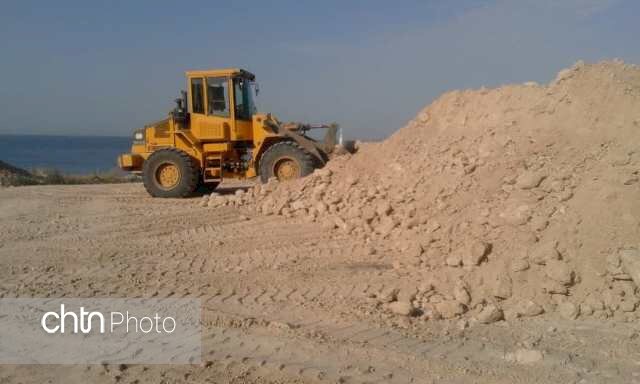Authorities rescue ancient hill from flattening by landgrabbers

TEHRAN – Iranian police have recently saved an ancient hill from the hands of landgrabbers attempting to flatten the archaeological site situated in Siraf, a historical port in southwestern Bushehr province.
“While patrolling the historical grounds, cultural heritage guards witnessed a loader was demolishing an ancient hill to make way for an illegal construction,” CHTN quoted Abdolhamid Haqani, a senior police official in charge of protecting cultural heritage, as saying on Sunday.
There have been arrests in this regard and some individuals were handed over to the judicial system for further investigation, the police official added.
Talking about the history of the port and valuable artifacts discovered from its ancient sites, he hailed cultural heritage guards as competent and well-versed forces, who are protecting the sites and monuments with all their might.
Back in February Cultural Heritage, Tourism and Handicrafts Minister Ali-Asghar Mounesan announced that Iran seeks to register Siraf port and several other southern seaports on the UNESCO World Heritage list in near future.
Last year, the national heritage site announced it would develop a data bank on fragments of historical ceramics and pottery discovered through various seasons of excavation in the port by British archaeologist David Whitehouse and his Iranian colleagues during the 1970s.
The historical port of Siraf was the most important Iranian port from the Sassanid period to the 4th century AH. It bears plentiful evidence of Persian mastership and genius in seafaring, international relations, and interaction with other near and far cultures and civilizations.
Between 1966 and 1973, the British Institute of Persian Studies conducted seven seasons of excavation and survey at Siraf, which was a major city on the Iranian shore of the Persian Gulf that played a leading role in the network of maritime trade that supplied Western Asia with the products of India, the Far East, and Eastern Africa between 800 CE and 1050.
At one time, the port had been one of the major centers for marketing pearls and silk in the region, but it was gradually submerged over the centuries.
Siraf had a population of about 300,000 during the early Islamic era and this fact shows that it was a large city. However, today, just about 7,000 people live in Siraf in a small area. The port city is a national heritage.
ABU/AFM

Leave a Comment